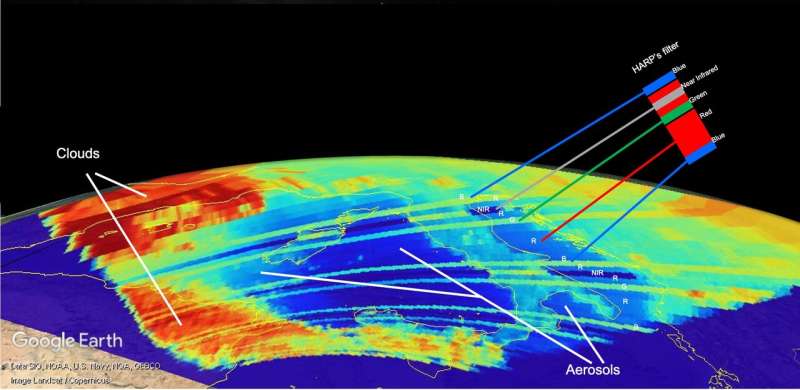Image: Tiny NASA satellite captures first image of clouds and aerosols

The Hyper-Angular Rainbow Polarimeter (HARP) CubeSat achieved "first light" on April 16. The tiny satellite sent back its very first image over Europe with bright splashes of colors defining clouds and aerosols, which are tiny particles in the atmosphere. HARP's measurements help us better understand how clouds and aerosols impact weather, climate and air quality.
HARP filters light into four wavelengths and uses a prism to rotate that light to three polarization angles. Just as polarized sunglasses help block bright light of a specific polarization to help you see past the sun's glare, HARP can block certain wavelengths and make observations from many angles. The CubeSat reveals what is hidden to the naked eye: amounts and types of aerosols as well as the size of water droplets or ice particles inside clouds.
"Every time HARP flies over a region, we see that region from multiple perspectives," Vanderlei Martins, HARP principal investigator and a professor at the University of Maryland, Baltimore County, said. HARP launched to the International Space Station from NASA's Wallops Flight Facility, Virginia, on Nov. 2, 2019. In February 2020, the CubeSat floated away from the space station and began its orbit around Earth.
HARP marks NASA's first attempt to put a polarimeter, which measures the polarization of light, aboard a CubeSat. HARP could pave the way for future NASA missions involving a constellation of little satellites peering down at clouds and aerosols, Martins said.
HARP also inspired a successor called HARP2, which is an instrument that will fly on NASA's Plankton, Aerosol, Cloud, ocean Ecosystem (PACE) mission. HARP2 is a copy of the HARP CubeSat polarimeter payload adapted for flying and collecting data from a large spacecraft platform like PACE.
Currently under development, PACE will extend and improve NASA's 20-plus-year record of satellite observations of global ocean biology, chemistry, aerosols and clouds. HARP2 will be able to operate all the time and collect significantly more science data than the HARP CubeSat.
Provided by NASA's Goddard Space Flight Center




















